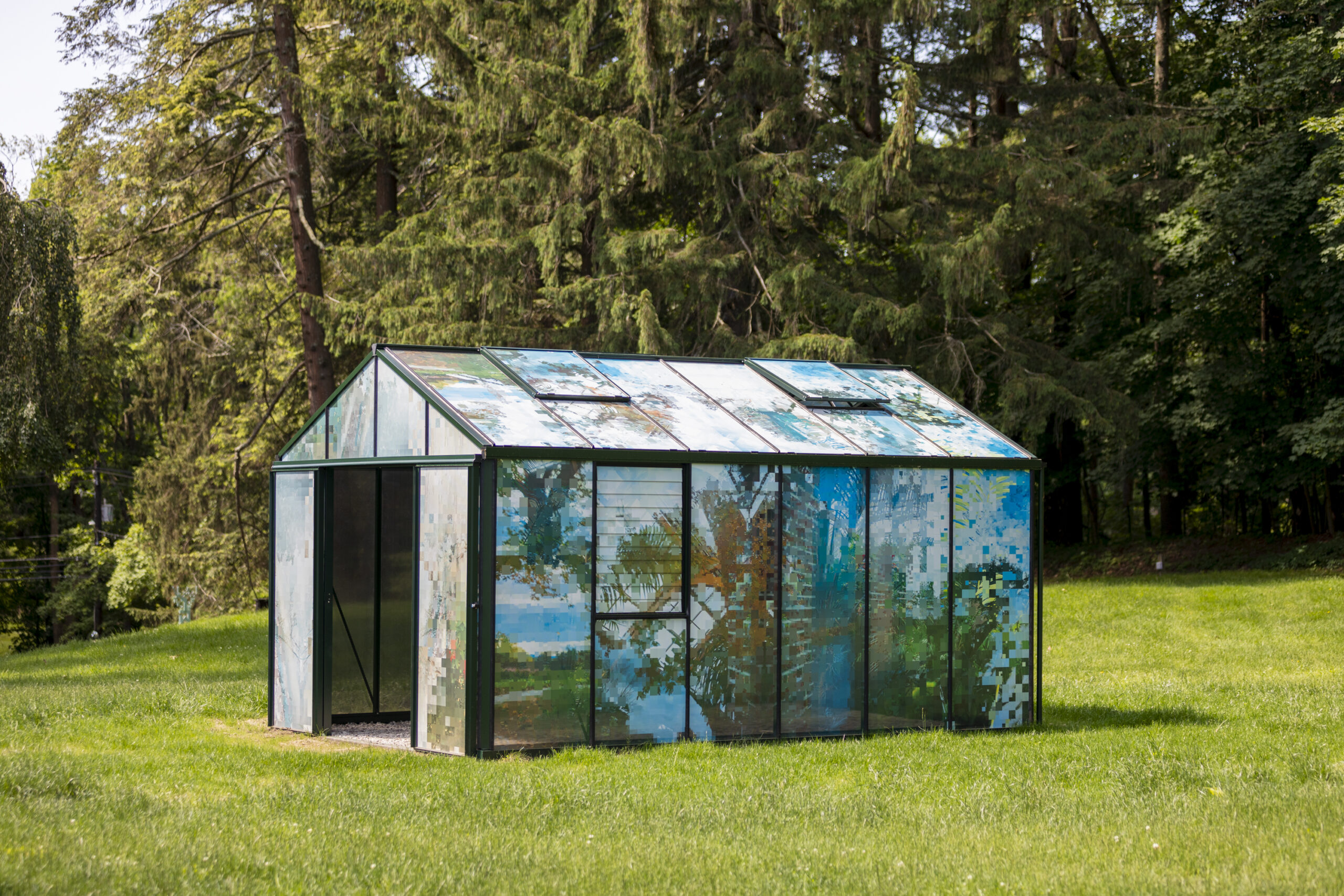This greenhouse is cloaked in pixelated botanical imagery printed on one-way perforated vinyl, a material often used for advertisements. Because of this, we cannot see inside this typically transparent structure. Joiri Minaya grew up in the Dominican Republic and, as an artist, now examines the history of often-forced export of plants, people, and culture from the Caribbean to other places including New England. Concerned with how “exotic” or tropical landscapes are viewed upon and stereotyped by outsiders, Minaya’s greenhouse inverts our expectations. The images of these plant species are opaque and inscrutable. To connect the past and the present, Minaya took these photographs at nearby greenhouses, including at the Lyman Estate in neighboring Waltham, one of the oldest existing greenhouses in the United States.
Perspective of an Enviromental Caretaker
There is something about a greenhouse that begs to be entered. Approaching the structure, your mind attempts to reconcile the composite artificial “nature” of the house’s exterior against the real nature beyond it. Greenhouses were an essential technology in the advancement of the field of botany and the European understanding of tropical plants. All manner of exotic flowers, vines, and verdant leafy trees were brought together from far-flung places under one roof. Stepping into Tropticon II, you become the specimen, but the gaze is reversed. You can see out of the house, but those outside cannot see in. The house lacks a door, allowing visitors to exit at any point. Tropticon II is a masterful undoing of the greenhouse’s colonial function—to trap, display, and subdue.
- Paige Curtis is a Jamaican American writer and communications professional from the American South. She writes a climate humor newsletter called Bad Environmentalist and covers stories at the intersection of climate change and culture.
